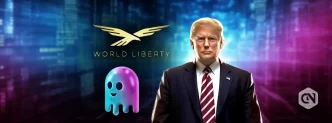2020 will go down in crypto history as the year that DeFi hit its stride, gaining over $15 billion in total value locked in the year, according to DeFi Pulse. However, the growth in 2021 is proving to be even more explosive, fueled by the increasing expansion of the ecosystem beyond the boundaries of Ethereum. While the eth2 upgrade is now underway, the pace of crypto adoption means that Ethereum’s infrastructure can no longer cope with its own traffic. Therefore, users and developers are seeking faster, cheaper alternatives.
Furthermore, the sustainability credentials of Proof of Work blockchains have recently been called into question once again. Even before Elon Musk’s comments regarding Bitcoin’s energy use, Ethereum was already under fire from the climate-conscious art community, who voted with their feet after realizing the carbon cost of their NFT drops.
As a result, there are now entire buzzing ecosystems of apps emerging on other established platforms, of which Tezos is a prime example. The platform, which launched on mainnet in 2018, is proving fertile ground for DeFi projects. In blockchains, development begets development, in a kind of snowball effect. Therefore, the DeFi ecosystem on Tezos is acting as a growth engine for broader expansion on the platform, including in its burgeoning NFT markets.
Tezos recently underwent its sixth major update, further optimizing gas fees and block size for low-cost transactions without compromising speed. So who’s currently busy investing and building on Tezos?
Investors Move In
Recently, two DeFi projects secured significant funding to build out their protocols on Tezos. Smartlink raised $3 million for its escrow payments system, while Crunchy Network, which offers “DeFi-as-a-Service” recently sold out its presale for $1 million.
Furthermore, in early April, blockchain fund Draper Goren Holm announced it would invest in incubating and accelerating startups built on the Tezos blockchain. In May, Graph Blockchain confirmed it had acquired the necessary 100,000 XTZ stake to become a baker on the Tezos network. In both cases, the firms expressed their belief that Tezos’ use of proof-of-stake and energy efficiency make it a leader among blockchain platforms.
While investment activity is happening mostly off-chain, established protocols are already starting to put the Tezos network through its paces on-chain. In April, Tezos recorded 1.3 billion contract calls, indicating usage was up by over 250% compared to the previous month. The increase seems startling; however, there is plenty of in-app activity to back it up.
Advertisement
QuipuSwap, an AMM DEX based on Tezos, announced in mid-May that the total locked value on its platform had exceeded $9 million. QuipuSwap is one of several DEXs on Tezos, including Dexter and newcomers Sepa.Exchange and FlameDeFi’s SpaceFarm.
Bender Labs recently released the WRAP protocol, allowing users to wrap their Ethereum-based tokens on the Tezos network. The project launched on mainnet in late April and has gone on to attract over $3 million in total value locked, with a peak 24-hour wrapping volume of nearly $3.6 million in mid-May. Wrapped assets include DeFi blue chips SUSHI, AAVE, WETH, UNI, and more. The project has also established a fast-growing market for USDC and USDT, allowing users to manage their stablecoin funds with significantly lower fees.
However, Tezos also has several native stablecoin projects of its own, including Kolibri (kUSD) developed by Hover Labs, Stably (USDS,) which is fully backed by fiat reserves and regulated by Prime Trust, a Nevada-chartered trust company, and Lugh (EURL), a Euro-pegged stablecoin launched by Groupe Casino, a French retailing giant, and fully backed by euros on a Société Générale bank account.
Flexible Token Standards and a Growing NFT Scene
DeFi apps on Tezos use the FA2 token standard, which allows multiple token types to be programmed through one standard. A single standard is in contrast to Ethereum, which uses the ERC20 fungible token standard and ERC721 for non-fungible tokens, among other token types. On Tezos, using a single token standard means that developers have a broad scope to develop complex token interactions while maintaining a standard API for wallets and external applications.
Therefore, the flexible token standard makes it seamless for Tezos tokens to move between DeFi and other applications, regardless of the type of token. This flexibility, combined with the platform’s green credentials, account for Tezos’ buzzing NFT markets.
Earlier this year, as the NFT craze took off in earnest, many digital artists took flight from Ethereum once they discovered the carbon cost of their NFT collections. Many of them found a home on Tezos. For example, Mike Tyka and Joanie Lemercier both dropped NFT collections on the hip Hic et Nunc marketplace, citing Tezos’ green credentials as a factor in their decision.
More recently, OneOf, a Tezos-based music NFT marketplace backed by Quincy Jones, pulled in an impressive $63 million seed investment, including from environmental activist Bill Tai. The platform aims to make it easier for artists to secure their rights over digital music files using collectible NFTs.
Advertisement
Tezos also recently managed to secure an impressive coup when the Red Bull F1 Racing team announced it had selected the platform to mint a range of NFT collectibles. The platform has become the “Official Blockchain Partner” of the Red Bull team, with the logo features on driver’s attire.
It would be fair to say that Ethereum’s success in 2020 came at the expense of other platforms in terms of investment and developer activity. However, the landscape is most definitely shifting. The green agenda is gaining increasing focus, and with plenty of faster and lower-cost alternatives, it’s time for platforms like Tezos to have their moment.








